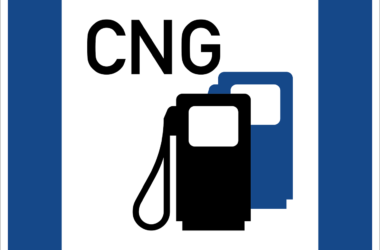In the realm of road safety, the concept of Vision Zero has become a pivotal focus for communities worldwide. At its core, Vision Zero aims to eliminate all traffic fatalities and severe injuries, fostering a safer and more sustainable transportation ecosystem. In this comprehensive guide, we delve into the intricacies of Vision Zero, outlining strategies, best practices, and the crucial role it plays in shaping a secure future.
Understanding Vision Zero
Vision Zero is not just a goal; it’s a philosophy that shifts the paradigm of road safety. Originating from Sweden in the 1990s, this revolutionary approach challenges the conventional belief that accidents are an inevitable part of traffic. Instead, it asserts that every traffic-related fatality or injury is preventable through a strategic combination of infrastructure improvements, educational initiatives, and policy changes.
The Four Pillars of Vision Zero
1. Safe Infrastructure
Creating safe infrastructure is the cornerstone of Vision Zero. This involves meticulously designing roads, intersections, and pedestrian pathways to minimize the risk of accidents. Implementing measures such as traffic calming devices, improved signage, and dedicated cycling lanes enhances overall safety.
2. Safe Vehicles
In the pursuit of Vision Zero, it’s imperative to advocate for the adoption of safe vehicles. Encouraging the use of advanced safety technologies, stringent vehicle safety standards, and regular maintenance can significantly reduce the likelihood of accidents.
3. Safe Speeds
Speed plays a pivotal role in the severity of road accidents. Emphasizing safe speeds through stringent speed limits, speed bumps, and intelligent traffic management ensures that drivers adhere to regulations, promoting a safer environment for all road users.
4. Safe People
Empowering individuals with knowledge and promoting responsible behavior is integral to achieving Vision Zero. Safe people encompass educated drivers, vigilant pedestrians, and proactive community engagement. Educational campaigns and outreach programs contribute to a collective commitment to safety.
Global Success Stories
Sweden: The Pioneer
Sweden, the birthplace of Vision Zero, stands as a testament to the success of this transformative approach. Since its inception, Sweden has consistently witnessed a decline in traffic-related fatalities, showcasing the efficacy of comprehensive strategies implemented nationwide.
New York City: Urban Transformation
New York City’s adoption of Vision Zero has redefined urban safety. Through a combination of enhanced crosswalks, traffic signal optimization, and public awareness campaigns, the city has experienced a significant reduction in pedestrian fatalities.
Implementing Vision Zero Locally
Municipal Initiatives
Cities worldwide are embracing Vision Zero by formulating and implementing municipal initiatives. These encompass collaborative efforts between local government bodies, law enforcement agencies, and community stakeholders to create a unified front against traffic-related incidents.
Community Engagement
Community engagement plays a pivotal role in the success of Vision Zero. Encouraging citizen participation through town hall meetings, workshops, and educational programs fosters a sense of ownership and collective responsibility for road safety.
Overcoming Challenges
While Vision Zero presents a transformative vision for road safety, challenges persist. Addressing issues such as resistance to change, budget constraints, and divergent stakeholder interests requires a concerted effort from all sectors involved.
Conclusion
In conclusion, the global adoption of Vision Zero represents a collective commitment to shaping a safer and more secure future for all road users. By prioritizing safe infrastructure, vehicles, speeds, and people, communities can work towards the ultimate goal of eliminating traffic fatalities and severe injuries. Let us unite in the pursuit of Vision Zero, creating a legacy of safety for generations to come.
Similar Articles
- Compressed Natural Gas (CNG) and its Impact on Transportation
- Exploring the Top Alternative Fuels for a Sustainable Future
Frequently Asked Questions (FAQs) About Vision Zero
1. What is Vision Zero?
Vision Zero is a comprehensive road safety initiative that aims to eliminate all traffic-related fatalities and severe injuries. Originating from Sweden, this philosophy challenges the notion that accidents are inevitable and focuses on creating a safe and sustainable transportation ecosystem.
2. How does Vision Zero work?
Vision Zero operates on the principle that all traffic incidents are preventable. It addresses road safety through a holistic approach, emphasizing safe infrastructure, vehicles, speeds, and people. By implementing strategic measures and policies, Vision Zero seeks to minimize the risk of accidents.
3. What are the four pillars of Vision Zero?
The four pillars of Vision Zero are:
- Safe Infrastructure: Designing roads and intersections for maximum safety.
- Safe Vehicles: Promoting the use of vehicles equipped with advanced safety features.
- Safe Speeds: Enforcing speed limits and employing traffic management strategies.
- Safe People: Educating individuals and fostering responsible behavior among road users.
4. Has Vision Zero been successful globally?
Yes, Vision Zero has demonstrated success on a global scale. Countries like Sweden, where it originated, have seen a consistent decline in traffic-related fatalities. Cities like New York have also experienced positive outcomes by adopting Vision Zero strategies.
5. How can municipalities contribute to Vision Zero?
Municipalities can contribute to Vision Zero through:
- Implementing municipal initiatives: Collaborative efforts involving local government, law enforcement, and community stakeholders.
- Encouraging community engagement: Hosting town hall meetings, workshops, and educational programs to involve citizens in road safety.
6. What role does community engagement play in Vision Zero?
Community engagement is crucial for the success of Vision Zero. Involving citizens in the process creates a sense of ownership and collective responsibility. Town hall meetings and educational programs foster awareness and commitment to road safety.
7. Are there challenges associated with implementing Vision Zero?
Yes, challenges exist in implementing Vision Zero, including resistance to change, budget constraints, and divergent stakeholder interests. Overcoming these challenges requires a concerted effort from all sectors involved.
8. Can Vision Zero be implemented in urban areas?
Absolutely. In fact, Vision Zero has shown significant success in urban areas. Cities worldwide are transforming their infrastructure, optimizing traffic signals, and launching public awareness campaigns to create safer environments for pedestrians and drivers alike.
9. How can individuals contribute to Vision Zero?
Individuals can contribute to Vision Zero by:
- Adhering to traffic rules and regulations.
- Being vigilant and responsible while driving or walking.
- Participating in community-led initiatives that promote road safety.
10. What is the ultimate goal of Vision Zero?
The ultimate goal of Vision Zero is to create a road system with zero fatalities and severe injuries. By prioritizing safety through infrastructure improvements, responsible behavior, and community engagement, Vision Zero envisions a future where every road user arrives safely at their destination.








